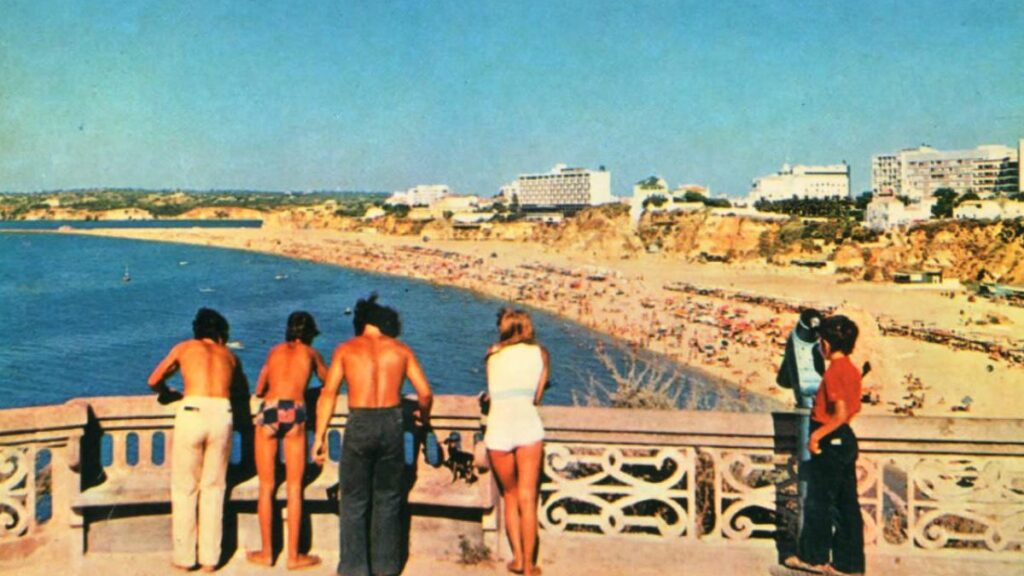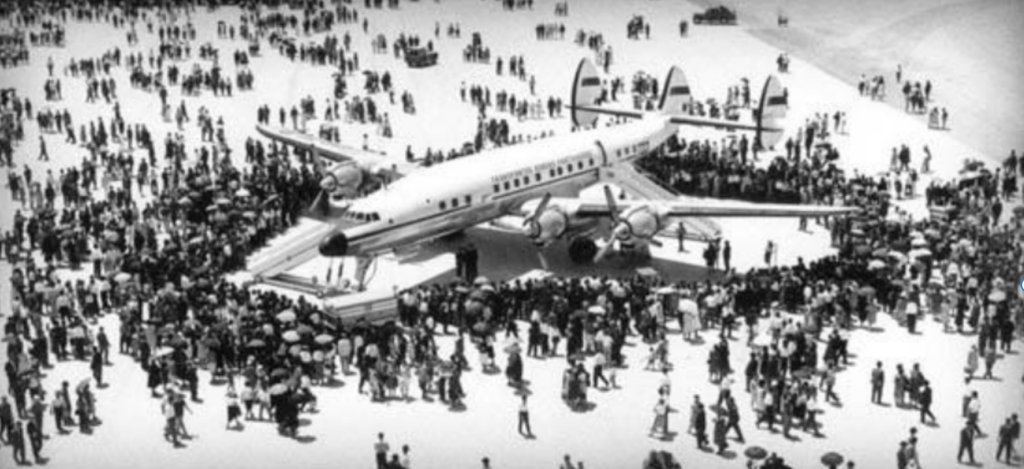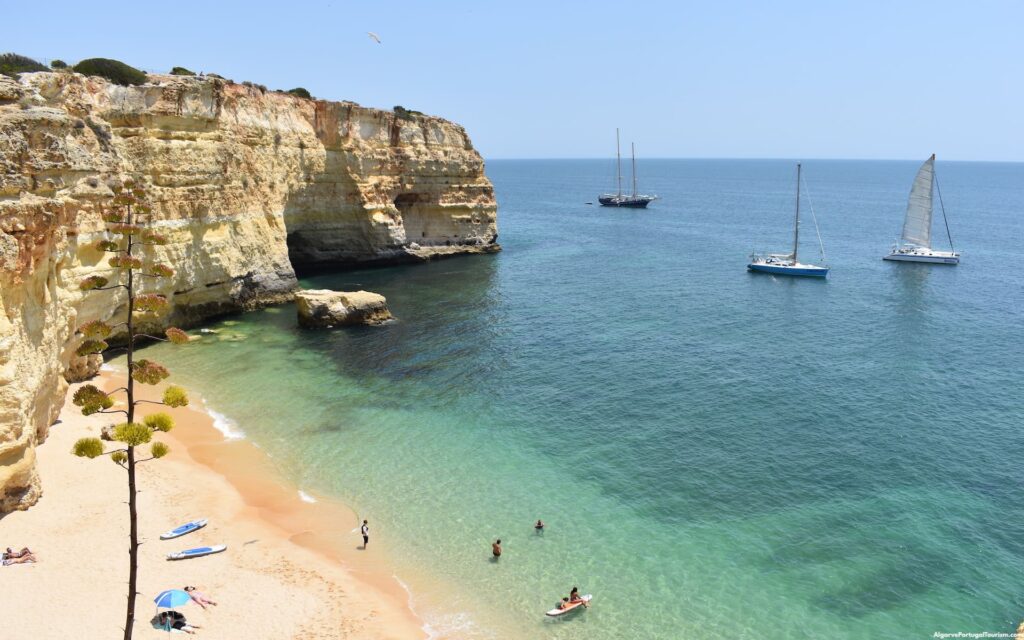Nestled along Portugal’s southern coast, the Algarve has transformed from a cluster of tranquil fishing villages into one of Europe’s most sought-after destinations.
This picturesque region, renowned for its stunning beaches, and welcoming climate, boasts a rich history of tourism that mirrors broader global trends and local innovations.

The Seeds of Tourism in Traditional Algarve
Long before the Algarve became synonymous with sun-soaked beaches and luxury resorts, it was a region primarily sustained by fishing, agriculture, and cork production. The rugged coastline and limited infrastructure kept the area relatively isolated, with most inhabitants engaged in subsistence activities.
From the outset, the sea and its abundant fish were a major point for the Algarve. For instance, from the latter half of the 19th century and the early 20th century, Spaniards, French, Italians, and Greeks began arriving in Portugal. They initiated another crucial phase of socio-economic development linked to the emergence of the canning industry, positioning the Algarve as a preferred destination for these matters.
From a tourism perspective, the Algarve occupied one of the lower tiers within the so-called national attractions, remaining virtually unknown in terms of international tourism. This was a time when, across Europe, the bourgeoisie was showing interest in Mediterranean tourism.
For a long period, access to the Algarve was not only difficult but also exceedingly time-consuming. Eventually, visitors began to discover the Algarve’s mild climate and fresh sea air, seeking the therapeutic benefits these natural attributes offered. Places like Praia da Rocha, Armação de Pera, Albufeira, Monte Gordo, and Manta Rota started to be visited regularly.

The Rise of Mass Tourism
A couple of decades later, the Algarve entered a transformative era driven by political and economic changes. Under the Estado Novo regime, Portugal identified tourism as a key economic driver and invested heavily in infrastructure. The opening of Faro Airport in 1965 and the expansion of road networks significantly improved access for international visitors.
From the 1950s to the 1970s, mass tourism was on the path to becoming a reality, fueled by the global popularity of package holidays.
While Vladimir Raitz is celebrated as the pioneer of this practice, it was his friend Harry Chandler who launched the first charter operations in the Algarve. Inspired by his wife’s decision to buy a holiday home in Alcantarilha, Chandler introduced English tourists to the region. When Faro Airport officially opened in July 1965, Chandler became the first to operate charter flights, marking the start of international tourism in the Algarve. His efforts laid the groundwork for the Algarve to become a beloved destination for visitors from the UK and beyond.
Travel agencies began offering all-inclusive packages, and coastal towns like Albufeira, Lagos, and Vilamoura underwent rapid transformation, with numerous hotels and resorts built to accommodate the growing number of tourists.
The hotel industry in the Algarve went from 30,000 overnight stays by foreigners in 1960 to 500,000 in 1967. In 1970, the number was already over a million — still a long way from the more than 14 million overnight stays by foreigners per year recorded today.
From the 1960s onwards, figures such as Princess Caroline of Monaco, architect Óscar Niemeier, writer Jorge Amado, racing driver Ayrton Senna, actress Ingrid Bergman, and musicians Paul McCartney, Tom Jones, and Cliff Richard visited the Algarve.

Transition and Diversification
As the region solidified its status as a mass tourism hub, the 1980s and 1990s brought significant changes driven by economic liberalization and Portugal’s entry into the European Economic Community (now the European Union) in 1986. These developments attracted foreign investment and facilitated modernization efforts, including the creation of world-class golf courses, marina complexes, and luxury resorts.
Golf tourism gained prominence, attracting a broader demographic of visitors. Restoration projects of historical sites and the promotion of local traditions enriched the region’s cultural appeal, while the rise of golf tourism positioned the Algarve as a top destination for enthusiasts, with courses set against breathtaking landscapes.
Environmental awareness also took root during this period. Initiatives aimed at preserving the region’s natural beauty led to the establishment of protected areas like the Ria Formosa Natural Park. These efforts underscored the Algarve’s commitment to sustainable tourism, ensuring that its pristine ecosystems remained intact for future generations.

Embracing Luxury and Sustainability
Entering the 2000s, the Algarve continued to evolve, embracing high-end tourism and sustainable practices. The rise of luxury accommodations, including boutique hotels and upscale villas, catered to affluent tourists seeking exclusive experiences.
Technological advancements have revolutionized the tourism landscape. The advent of online booking platforms and the pervasive influence of social media transformed the way tourists discovered and planned their trips. The Algarve leveraged these digital tools to reach a global audience, enhancing its visibility and appeal.
Sustainability remained a core focus, with the Algarve prioritizing eco-friendly practices and responsible tourism. Community-based tourism projects encouraged visitors to engage authentically with local traditions and support local businesses. Ongoing environmental conservation efforts, such as marine protection and beach clean-ups, reinforced the region’s dedication to preserving its natural allure.
The global challenges of the 21st century, including economic fluctuations and the COVID-19 pandemic, tested the resilience of the Algarve’s tourism industry. However, the region demonstrated remarkable adaptability, pivoting towards trends like remote work and long-term stays. The Algarve positioned itself as an attractive destination for digital nomads and extended tourists, seeking quality of life.
Looking ahead, the Algarve faces the dual challenge of sustaining growth while preserving its natural and cultural heritage. The region’s commitment to sustainable development is evident in its strategies to promote off-season tourism, invest in eco-friendly infrastructure, and encourage responsible business practices.
Planning a visit to this charming and interesting region?
Book your villa with us! — www.algarvehousing.net
